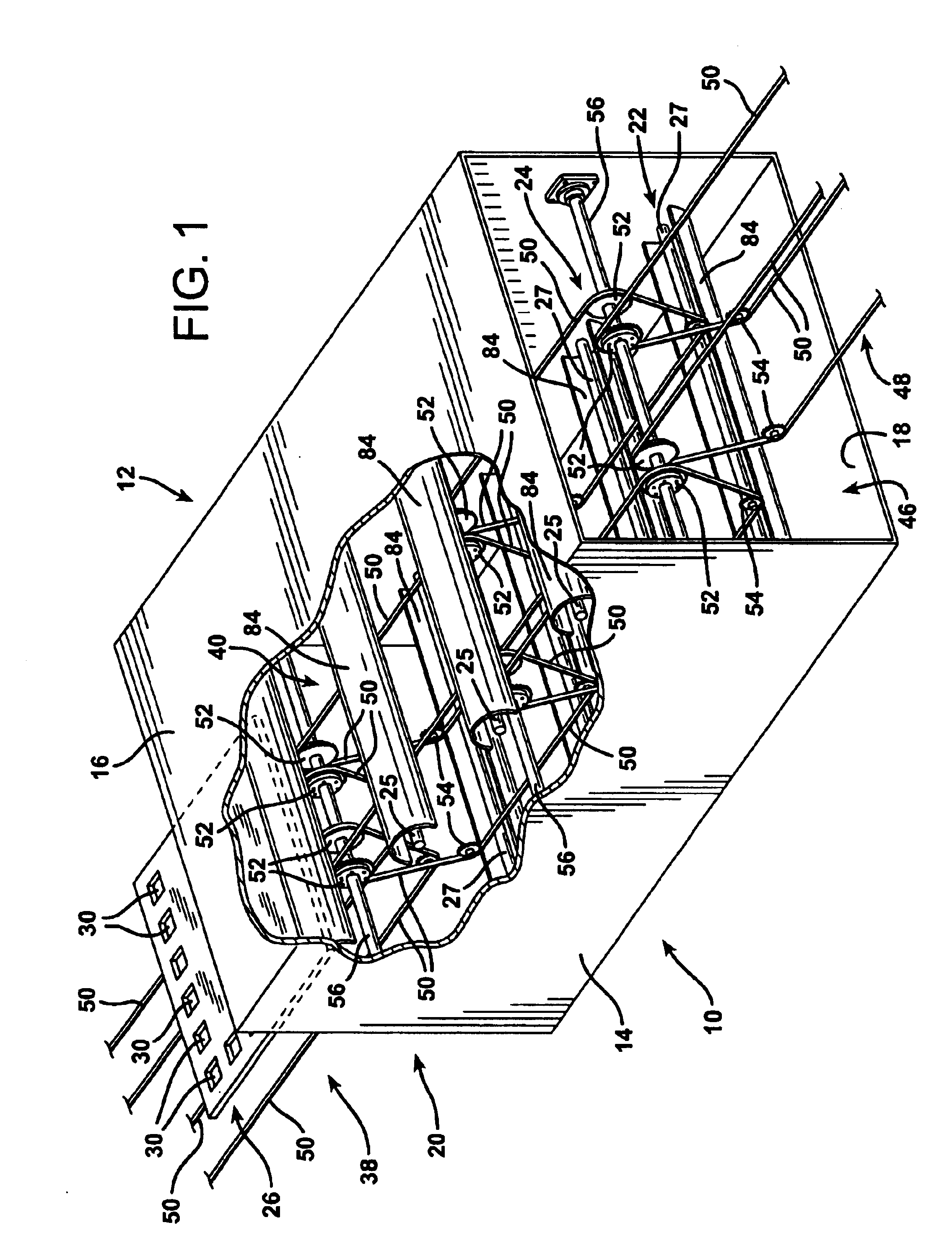Top and bottom ultraviolet sterilization system
a sterilization system and ultraviolet radiation technology, applied in the field of improvement, can solve the problems of lingering bacteria on the surface, unable to completely sanitize the article by ultraviolet radiation using the conventional conveyor system, and casting radiation "shadows" on certain parts of the underside of the article being treated
- Summary
- Abstract
- Description
- Claims
- Application Information
AI Technical Summary
Benefits of technology
Problems solved by technology
Method used
Image
Examples
Embodiment Construction
FIGS. 1 and 3 illustrate an improved ultraviolet light irradiation apparatus according to the invention indicated generally at 10. The irradiation apparatus 10 is comprised of an irradiation tunnel 12 having laterally separated vertical sidewalls 14, a roof 16, and a floor 18. The ends of the tunnel 12 have openings that define an entrance 20 and an exit 22 which are longitudinally displaced from each other.
A conveyor system, indicated generally at 24, is provided for supporting articles 26 to be irradiated with ultraviolet radiation. The articles 26 to be irradiated are supported from beneath by the conveyor system 24 and are transported along a linear, horizontal, longitudinal treatment path 28 from the entrance 20 to the exit 22 of the tunnel 12. As the articles 26 pass along the treatment path 28, they are exposed to ultraviolet radiation from above by a bank of upper ultraviolet lamps 25 and to ultraviolet radiation from beneath by a bank of lower ultraviolet radiation lamps 27...
PUM
| Property | Measurement | Unit |
|---|---|---|
| length | aaaaa | aaaaa |
| wavelength | aaaaa | aaaaa |
| length | aaaaa | aaaaa |
Abstract
Description
Claims
Application Information
 Login to View More
Login to View More - R&D
- Intellectual Property
- Life Sciences
- Materials
- Tech Scout
- Unparalleled Data Quality
- Higher Quality Content
- 60% Fewer Hallucinations
Browse by: Latest US Patents, China's latest patents, Technical Efficacy Thesaurus, Application Domain, Technology Topic, Popular Technical Reports.
© 2025 PatSnap. All rights reserved.Legal|Privacy policy|Modern Slavery Act Transparency Statement|Sitemap|About US| Contact US: help@patsnap.com



